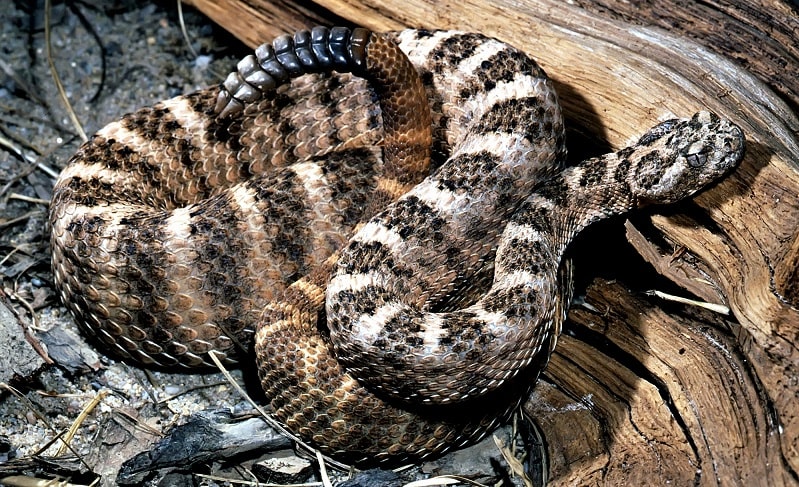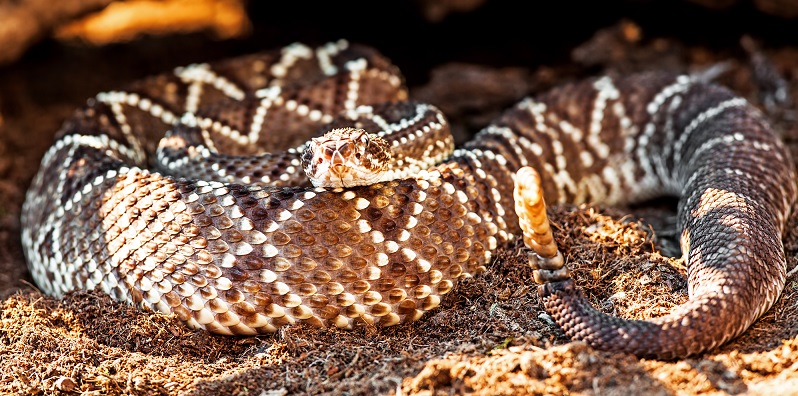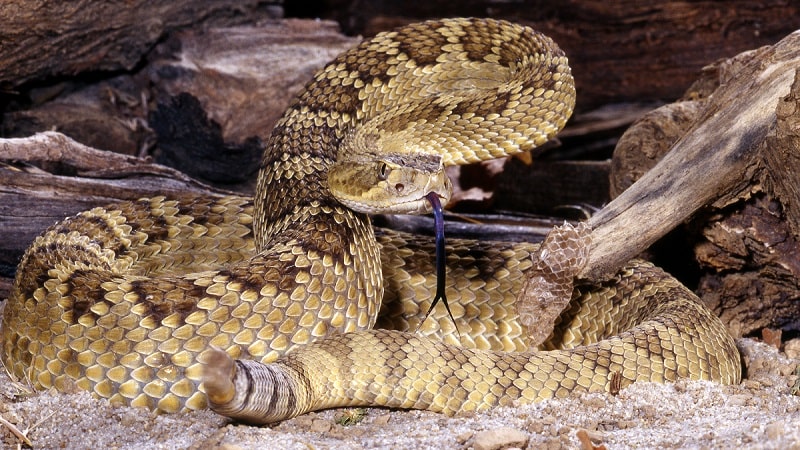There are about 37 venomous snakes in the United States, and 23 of those species are rattlesnake subspecies. Because of this, they’re some of the most feared animals in the country (although bears are the most lethal animals).
If you get bitten by a rattlesnake, you should seek emergency care immediately — if it’s available.
But what if it’s not?
Whether you’re backpacking through the wilderness or in a disaster, medical attention may either not be an option or take a long time to arrive.
There are rumors that you can survive a rattlesnake bite without treatment. We’ll explore if there’s any truth to this and what you should do if it happens to you.
Can You Survive a Rattlesnake Bite Without Treatment?
Is it possible? Yes. But there’s no guarantee.
First of all, if a rattlesnake bit you, you should most definitely seek treatment. However, that’s not always an option.
Second, your chances of survival depend to some extent on the type of rattlesnake that bites you. While not an all-inclusive list, here’s a rundown of some of the most common or notorious species and their lethality:
- Eastern and western diamondback rattlesnakes: Arguably the most well-known rattlesnakes, both snakes have a 10%–20% lethality rate if the bite is left untreated.
- Mojave rattlesnake: If left untreated, the bite has a lethality rate of 30%–40%,
- Tiger rattlesnake: The most venomous of all rattlesnakes, they have short fangs and inject very little venom when biting. Because of that, they aren’t as nearly as dangerous as some other rattlesnake species, which, while being less venomous, inject more venom when biting. The untreated lethality rate is unknown.
- South American rattlesnake: Like the tiger rattlesnake, bites from South American rattlesnakes are rare, so data is unavailable.
- Arizona and horned rattlesnakes: Less venomous than their cousins, with very small fangs, so the untreated lethality rate is probably lower than that of diamond rattlesnakes, but there’s no factual data because there are so few bites.
- Timber rattlesnake: One of the scarier rattlesnakes because of its impressive size, but the untreated lethality rate is only 1%–10%.
Most fatalities from rattlesnake bites are older people and people with underlying chronic health conditions exacerbated by snake venom. The deaths of healthy adults aged between 18 and 59 are often cases of people not seeking professional help.
If a rattlesnake bites you and medical attention is unavailable, here’s what you should do:
- Get away from the snake.
- Don’t panic! Raising your BPM and breathing faster will only prevent you from thinking straight and circulate the venom around your body quicker.
- Act quickly. The bitten body part (usually a limb) will swell up quickly. Remove any jewelry, bands, watches, or anything else that may tighten around your swelling limb.
- Call for help. Try to call emergency services again (even if the call failed last time).
- Walk to help. If help isn’t coming, you’re going to have to walk. Walk at a relaxed pace and avoid walking briskly. At this point, your priority is getting to a place where you can call for help or to your vehicle. As you walk, keep trying to reach emergency services.
- Sit down if you’re feeling lightheaded and think you’ll faint. If you faint while you’re walking, you might hit your head and make the whole situation worse.
- Rest if you must. If you’re sure there’s no chance of getting yourself to a hospital or calling for help and you can’t walk anymore, the best thing to do is lay down comfortably, keep the bitten spot below your heart, and hope for the best.
Here are a few things you should never do:
- Don’t cut into the bite spot. There’s a myth that this will let the venom out, which is completely untrue, as the venom will have already spread around your body by the time you pull out your knife.
- Don’t try to suck the venom out. It’s impossible to do that because the venom has already spread, and even if it were possible, you don’t want snake venom in your mouth. Read more about snakebite kits and why they are a bad idea.
- Don’t apply a tourniquet to slow down the spread of the venom. The venom will spread either way and by applying a tourniquet, you’re just cutting off circulation to an envenomated body part, which may result in losing the body part. Read more about why you should not use a tourniquet after a snakebite.
- Don’t take any medications (not even pain meds), drugs, alcohol, or caffeine. You can drink water, but not too much.
- Don’t try to catch the snake or kill it in revenge. You’ll get bitten again and destroy all chances of survival.
If you ever find yourself in the wilderness, bitten by a rattlesnake with no chance of getting yourself to a hospital, at least you now know your options. However, just because you might not die (which is a statement that doesn’t sound very encouraging on its own), you might still lose a limb or a finger, or develop chronic health problems after getting bit.
How Dangerous Is Rattlesnake Venom?
The toxicity of venom is measured in a median lethal dose (marked as LD50), which is the average venom dose needed to kill half the members of the tested population. Lower LD50 means that the venom is highly toxic, and higher LD50 means that the venom isn’t very toxic.
To immediately ease your mind, know that rattlesnakes are nowhere near the top of the most venomous snakes list. It would take 21–60 milligrams of tiger rattlesnake venom to kill a 220-pound adult man. In comparison, it only takes 2.5 milligrams of the inland taipan’s venom to kill a 220-pound adult man, and the inland taipan is the most venomous snake in the world.
Venom toxicity, however, isn’t the only thing that makes a snake dangerous. As we’re about to see from the following examples, we have to account for other factors as well.
While all rattlesnake species are venomous and a bite from any of them requires emergency medical attention, three rattlesnake species are noticeably more venomous than the rest: the tiger rattlesnake, the South American rattlesnake, and the Mojave rattlesnake.

The tiger rattlesnake is the most venomous of all rattlesnakes, but it has short fangs and injects very little venom when biting. Because of that, tiger rattlesnakes aren’t nearly as dangerous as some other rattlesnake species, which, while less venomous, inject more venom when biting.
On average, tiger rattlesnakes inject between 6 and 11 milligrams of venom when biting, which means that most adult people are safe from this snake despite the fact that it’s highly venomous.

In comparison, the South American rattlesnake is more or less equally venomous, but it injects between 20 and 100 milligrams of venom per bite. This makes it much more dangerous than the tiger rattlesnake.

The Mojave rattlesnake, which is close to the previous two species when it comes to venom potency, injects between 50 and 150 milligrams of venom when biting, making it incredibly dangerous.
So, how dangerous is rattlesnake venom? Rattlesnake venom is potentially fatal for humans, and it’s extremely dangerous for children, the elderly, and the chronically ill. Even the least venomous rattlesnakes have the potential to kill a healthy adult man.
However, rattlesnake venom is not as nearly as dangerous as the venom of the most venomous snakes in the world (almost all of which are native to Australia).


Thank you. I had a near miss, no phone. I was 1/2 to 3/4 mile from help, and have wondered what might have happened. Your article was the only one with any practical info in such a case. I guess the answer is, walk back, calmly.